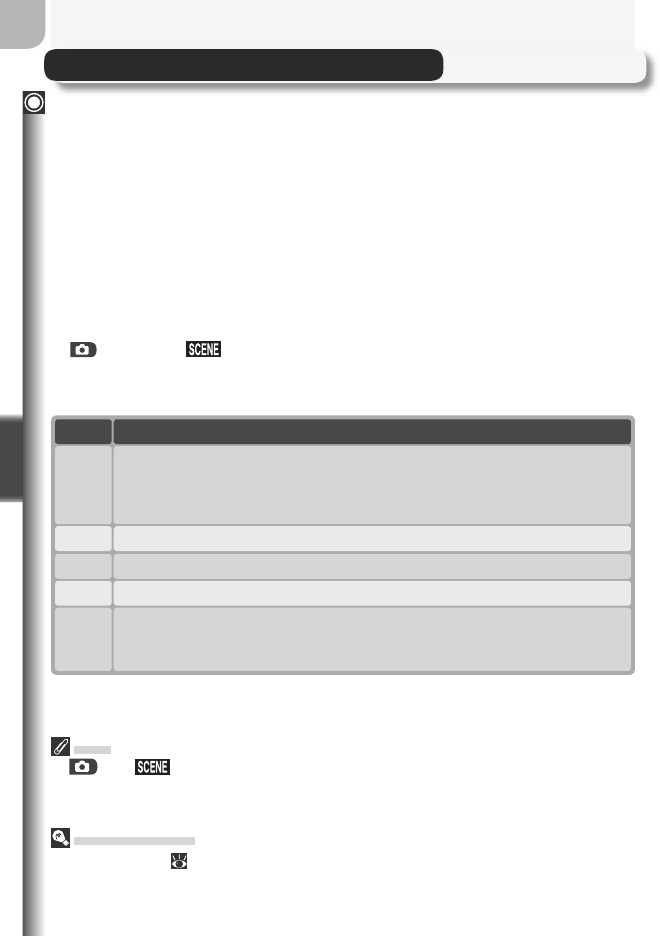
58
More on Photography
Sensitivity (P, S, A, and M)
Sensitivity is a measure of how quickly the camera reacts to light. The higher
the sensitivity, the less light needed to make an exposure, allowing the same
exposure to be achieved with faster shutter speeds or smaller apertures. In a
fi lm camera, sensitivity is a characteristic of the fi lm, not the camera. The ISO
ratings on fi lm packages are a measure of sensitivity —the higher the ISO rat-
ing, the more sensitive the fi lm. Higher sensitivity is achieved by altering the
chemical composition of the fi lm, causing a random pattern, called “grain,”
to appear in the fi nal picture. In a digital camera, increased sensitivity has a
similar effect: higher sensitivities allow higher shutter speeds, at the expense
of “noise” — randomly spaced, brightly colored pixels that appear mainly in
dark parts of the image.
In
(auto) and (scene) modes, the camera automatically raises sensi-
tivity when lighting is poor. In P, S, A, and M modes, the following options
are available:
Option
50
Description
Approximately equivalent to an ISO rating of 50. Recommended except
when lighting is poor or when faster shutter speeds are required (e.g.,
when photographing moving objects). Noise may appear in pictures taken
at ISO settings above this value.
100
Approximately equivalent to an ISO rating of 100.
200
Auto
Equivalent to a setting of 50 under normal conditions; when lighting is
poor, however, camera automatically compensates by raising sensitivity to
a maximum equivalent to ISO 200.
Approximately equivalent to an ISO rating of 200.
400
Approximately equivalent to an ISO rating of 400.
Auto
In and modes, or when a sensitivity of Auto is selected in P, S, A, or M
mode, an ISO icon is displayed in the monitor whenever sensitivity is raised above ISO
50 equivalent. Noise may appear in pictures taken when this icon is displayed.
Noise Reduction
Noise reduction ( 111) can be used to reduce noise in pictures taken at shutter
speeds of about ¼ s or slower.


















